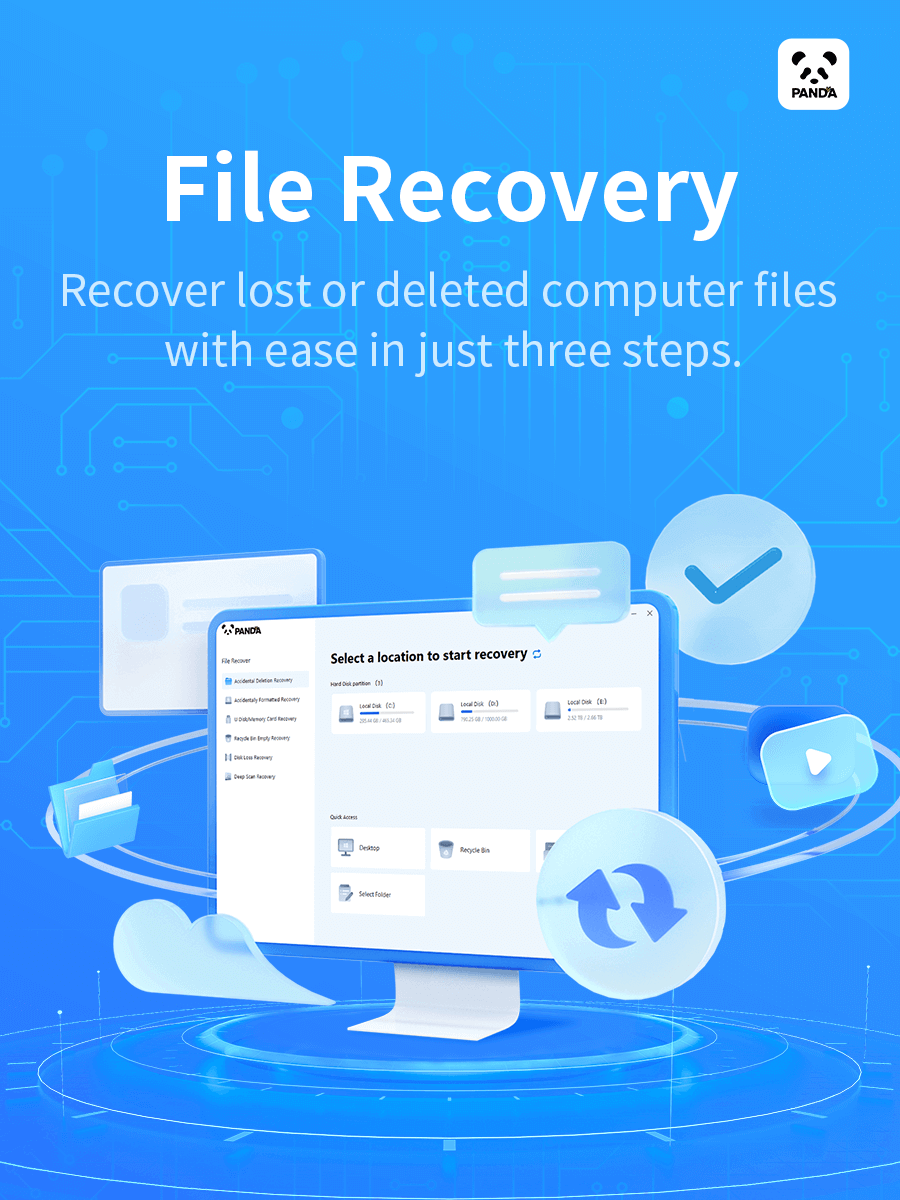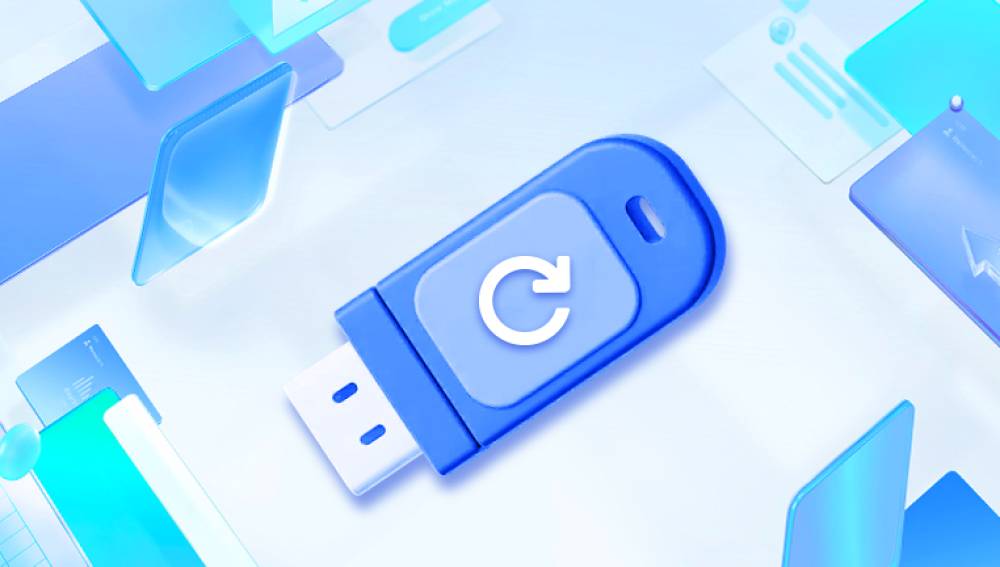Losing important files from a USB drive can be a distressing experience. Whether it's due to accidental deletion, formatting, or other issues, there are several methods and tools available to attempt file recovery.
Accidental Deletion: This is one of the most common reasons. Users might accidentally select and delete files while trying to manage or organize the contents of the USB drive.
Formatting: Sometimes, users may accidentally format the USB drive, which erases all the data on it. This can happen when trying to change the file system format or when the drive appears to be corrupted and the user attempts to fix it by formatting.
Virus or Malware Attacks: Viruses and malware can infect USB drives and cause file deletion. They may also corrupt the file system, making the files inaccessible.

Hardware Issues: Physical damage to the USB drive, such as a faulty connector or internal component failure, can lead to data loss. Power surges or improper ejection of the USB drive can also cause file corruption or deletion.
Precautions Before Recovery
Stop Using the USB Drive Immediately: As soon as you realize that files have been deleted, stop using the USB drive. Continuing to use it may overwrite the deleted files, making recovery more difficult or even impossible.
Avoid Formatting or Partitioning: Do not attempt to format or partition the USB drive again unless you are absolutely sure that you don't need the deleted files. These operations can permanently erase the data.
Handle the USB Drive with Care: If the data loss is suspected to be due to physical damage, handle the USB drive very carefully to prevent further damage. Do not try to force the USB drive into a port or manipulate it in any way that could cause more harm.
Methods to Recover Deleted Files from a USB Drive
Method 1: Using Windows Recycle Bin
Check the Recycle Bin: If you are using a Windows computer and have deleted files from a USB drive, the first place to check is the Recycle Bin. Sometimes, when files are deleted from a USB drive on a Windows system, they may be moved to the Recycle Bin instead of being permanently deleted. Open the Recycle Bin and look for the deleted files. If you find them, right-click on the files and select "Restore" to move them back to their original location on the USB drive.
Method 2: Using Mac Trash
Check the Trash: On a Mac, when you delete files from a USB drive, they may be sent to the Trash. Open the Trash and search for the deleted files. If they are there, you can simply drag and drop them back to the USB drive or right-click and select "Put Back" to restore them to their original location.
Method 3: Using Data Recovery Software
Drecov Data Recovery is a comprehensive software solution designed to help users recover lost or deleted files from various storage devices, including hard drives, SSDs, USB flash drives, and memory cards. Whether files were accidentally deleted, lost due to a system crash, or corrupted by a virus, Drecov Data Recovery aims to retrieve data quickly and efficiently.
One of the standout features of Drecov Data Recovery is its user-friendly interface. It is suitable for both beginners and advanced users, with an intuitive setup that guides you through the recovery process. The program offers a simple three-step procedure: scan, preview, and recover. First, users can scan the selected storage device for recoverable files. After the scan, Panda provides a detailed list of files that can be restored, allowing users to preview the files before recovery. This ensures that only the necessary files are recovered, saving time and space.
Method 4: Using Command Prompt (Windows)
Open Command Prompt as Administrator: Press the Windows key + R, type "cmd", and press Ctrl + Shift + Enter to open the Command Prompt as an administrator.
Use the Chkdsk Command: In the Command Prompt, type "chkdsk H: /f" (replace "H" with the drive letter of your USB drive). This command will check the file system of the USB drive for errors and attempt to fix them. It may also recover some deleted files.
Use the Attrib Command: After running chkdsk, you can use the attrib command to try to recover hidden or deleted files. For example, type "attrib -h -r -s /s /d H:." (replace "H" with the drive letter of your USB drive). This command will remove the hidden, read-only, and system attributes from all files and folders on the USB drive, which may make some deleted files visible again.
Method 5: Using Terminal (Mac)
Open Terminal: You can find the Terminal in the Applications > Utilities folder on your Mac.
Use the Disk Utility First: Before using the terminal commands, it's a good idea to open Disk Utility and check the health of the USB drive. You can do this by selecting the USB drive in Disk Utility and clicking on the "First Aid" button.
Use the fsck Command: If the Disk Utility doesn't solve the problem, you can use the fsck command in the Terminal. For example, if your USB drive is named "MyUSB", you can type "sudo fsck_hfs /dev/disk2s1" (replace "disk2s1" with the correct disk and partition identifier for your USB drive). This command will check and repair the file system of the USB drive and may recover some lost files.
Method 6: Professional Data Recovery Services
When to Consider Professional Services: If the above methods do not work and the data on the USB drive is extremely important, it may be time to consider professional data recovery services. This is especially true if the data loss is due to physical damage to the USB drive or if the drive has been severely corrupted.
Choosing a Professional Service: Look for a reputable data recovery company with experienced technicians and state-of-the-art equipment. Read reviews and testimonials from previous customers and ask for quotes before deciding on a service. Some well-known data recovery companies include Kroll Ontrack, Gillware Data Recovery, and ACE Data Recovery.
Tips to Prevent Future Data Loss
Regularly Back Up Your Data: The best way to prevent data loss is to have regular backups of your important files. You can use an external hard drive, cloud storage, or a network-attached storage (NAS) device to back up the contents of your USB drive.
Use Write-Protect Tabs: Some USB drives have a write-protect tab that can be set to prevent accidental deletion or modification of files. Use this feature if your USB drive has it.
Eject USB Drives Properly: Always eject the USB drive safely before removing it from the computer. On Windows, you can click on the safely remove hardware icon in the system tray and select the USB drive to eject. On a Mac, you can right-click on the USB drive icon and select "Eject".
Install Antivirus and Anti-Malware Software: Protect your computer and USB drives from viruses and malware by installing reliable antivirus and anti-malware software. Keep the software updated to ensure it can detect and prevent the latest threats.
Handle USB Drives with Care: Avoid physical damage to the USB drives by handling them carefully. Do not expose them to extreme temperatures, moisture, or magnetic fields. Store them in a safe and dry place when not in use.




